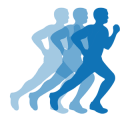A shoulder dislocation, caused by the forward displacement of the humerus bone, requires immediate medical attention. Refrain from self-realigning the joint.
Dislocated shoulder symptoms
Shoulder dislocation symptoms include:
- Immediate intense pain during injury
- Quick swelling of the shoulder joint
- Later development of bruising
- Sensation of shoulder popping out of joint
- Altered appearance or possible lowering of injured side
- Resistance to move or turn arm outwards
Additional signs of nerve or blood vessel damage can be pins and needles, numbness, or arm discolouration extending to the hand.
What is a shoulder dislocation?
A shoulder dislocation occurs when the humerus head detaches from the shoulder joint, and typically falls into two categories: posterior or anterior dislocations.
Anterior shoulder dislocations
Anterior shoulder dislocations represent 95% of cases, where the humerus bone dislodges forward, usually when the arm is abducted and externally rotated. These often cause:
- Glenoid labrum tears (Bankart lesions)
- Axillary nerve injury, resulting in shoulder numbness
- Damage to surrounding ligaments, tendons, nerves, blood vessels, and potential bone fractures
Recurrent injuries can occur without proper rehabilitation.
Posterior shoulder dislocations
Posterior shoulder dislocations, where the humerus dislocates backwards, represent about 3% of cases. These typically occur during epileptic seizures or falls onto an outstretched hand.
Dislocated shoulder causes
Shoulder dislocations typically occur due to falls on an outstretched arm, arm twists, or direct shoulder impacts. The shoulder joint’s extensive mobility makes it more injury-prone due to reduced stability.
Treatment
For immediate treatment of a dislocated shoulder, safeguard the joint to avoid further damage and seek medical help immediately. Never try to realign the shoulder yourself, as this can cause severe nerve and blood vessel damage.
Immediate First Aid
Cease activity immediately due to severe shoulder pain and seek medical attention for diagnosis and joint realignment.
Cold Therapy/Ice
Apply cold therapy or ice for 15 minutes hourly to reduce pain and swelling. Opt for specialized shoulder wraps for combined cold therapy and compression.
Protection
In the event of delayed realignment, a sling may be employed to support your arm. Post-acute phase, a shoulder brace can limit unnecessary joint movement.
Dislocated shoulder reduction
“Reduction” refers to the medical procedure of aligning a dislocated bone back into place. Quick reduction is generally easier.
This procedure can be non-surgical (closed reduction) or surgical (open reduction), depending on related injuries, fractures, and joint damage. Post-reduction, an X-ray is necessary to check for complications.
To alleviate pain and control muscle spasms during the procedure, a xylocaine injection may be administered.
Surgery
Your surgeon will typically perform the operation promptly after your injury.
Patients aged 15 to 25
Research highlights that young, active adults (15-25 years) experiencing their first anterior dislocation may find surgical reduction advantageous. This approach often provides better recurrence rates and improved life quality than non-surgical methods.
Patients aged 25 to 40
For patients aged 25 to 40, conservative treatment is often preferred due to a lower recurrence rate. The treatment choice largely depends on the patient’s lifestyle and activities. Certain surgical procedures may restrict shoulder rotation, thus affecting performance in throwing or racket sports.
Recurrent shoulder dislocations
Recurrent dislocations, common in younger athletes, often require arthroscopic surgery for joint assessment and stabilization. If a Bankart lesion is detected, surgical repair can reduce the risk of further dislocations to less than 5%.
Treatment after reduction
After a closed reduction, conservative treatment typically follows, involving rest and sling immobilization to aid healing. Certain surgeons may recommend a sling in 30 degrees of external rotation to lessen the impact on a potential Bankart lesion and reduce recurrence risks. Pain and inflammation may be managed with NSAIDs like ibuprofen.
